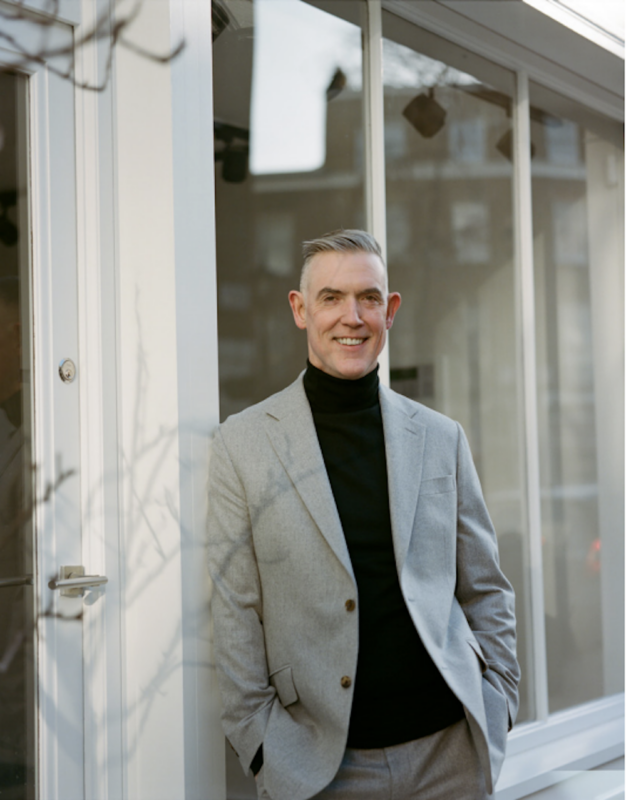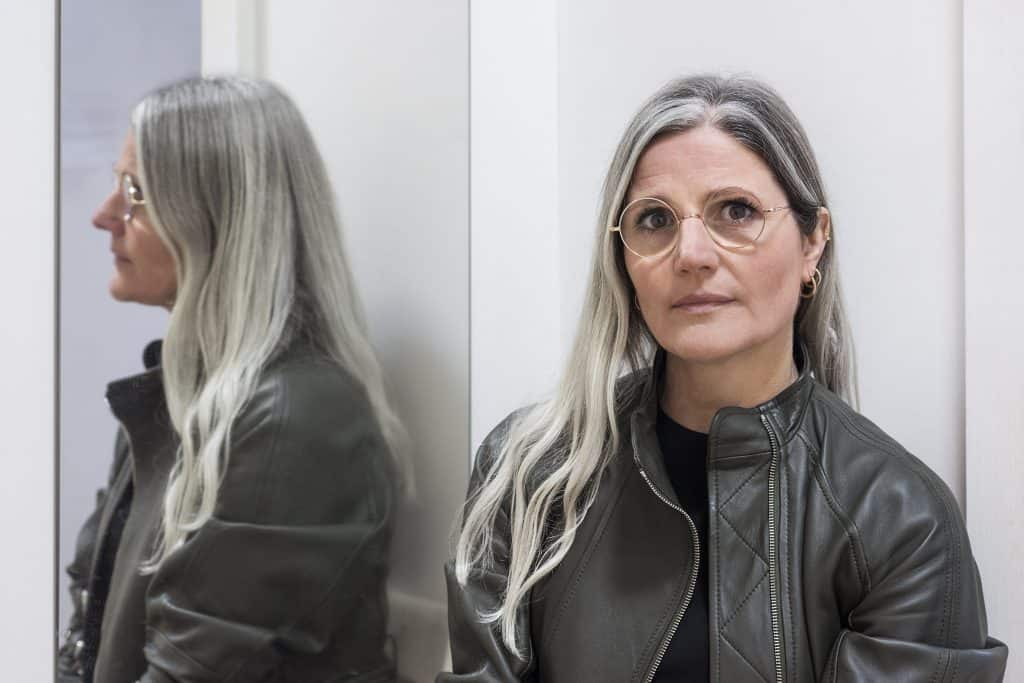
Max Mara, Whitechapel Gallery and Collezione Maramotti are delighted to announce that Emma Talbot (b. 1969, UK), winner of the 8th edition of the Max Mara Art Prize for Women (2019-2022), will travel to Italy in June 2021 to begin her six-month residency organised by the Collezione Maramotti.
The prestigious prize supports UK-based female artists who have not previously had a major solo exhibition. Awarded in alternate years since 2005, it is the only visual art prize of its kind in the UK. The Prize provides the winner an opportunity to develop her career as an artist through a fully-funded, bespoke Italian residency, which will culminate in a solo exhibition featuring a new body of work to be shown first at Whitechapel Gallery and then at Collezione Maramotti in 2022.
“This prize comes at a crucial point that seems incredibly timely for me, as I have only recently begun to focus fully on my own work, having for many years taken on teaching roles to support my family, as a single parent. The Max Mara Art Prize for Women will help me make the most of this major step. Just at the perfect time, this supportive and amazing opportunity to concentrate totally on my work, and undertake extended first-hand research, will be life-changing.”
Emma Talbot
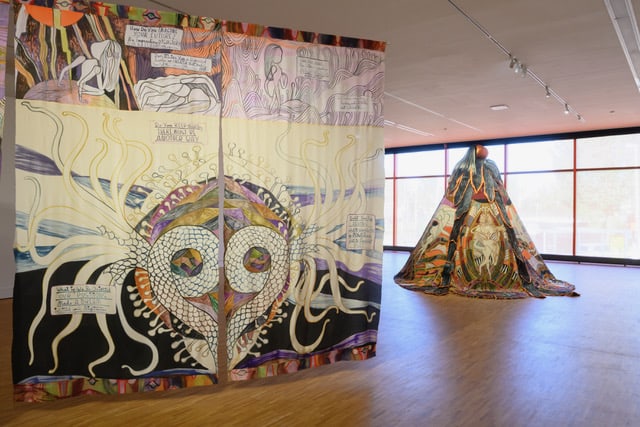
Emma Talbot Installation view from Sounders of the Depths 26 October 2019 – 16 February 2020 Curated by Yasmijn Jarram
GEM Museum Voor Actuele Kunst, The Hague Photo: Peter Cox
Due to the pandemic, Talbot’s residency could not take place in 2020, as planned. Pending travel restrictions and government advice, the artist’s residency will take her to Reggio Emilia, Catania and Rome from June to December 2021, allowing her to research classical mythology, textile craftsmanship and permaculture across treasured historic sites and institutions.
“Emma Talbot’s project takes mythology and art history as a point of departure for exploring new principles and practices that could help build a future society. We hope the immersion in Italian culture offered by this residency, at such a unique time for individuals and communities, will be the perfect foundation for bringing her vision to life.”
Sara Piccinini, Collezione Maramotti Director
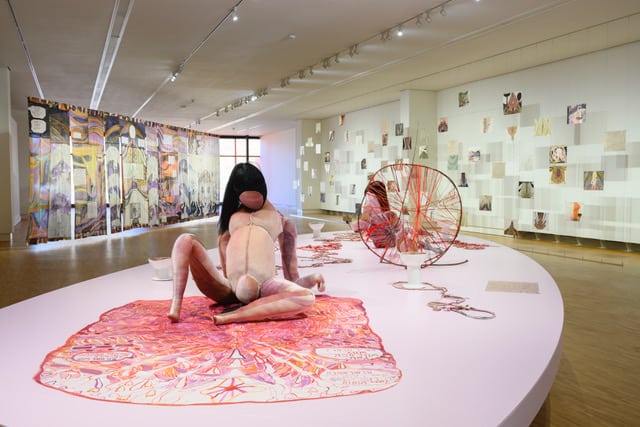
Emma Talbot Installation view from Sounders of the Depths, showing the work Your Birth – the epic historical moment you can’t remember
26 October 2019 – 16 February 2020 Curated by Yasmijn Jarram GEM Museum Voor Actuele Kunst, The Hague Photo: Peter Cox
Textiles are central to Talbot’s work and her stay in Reggio Emilia will offer a unique opportunity to acquire new skills in production. Here she will explore Modateca Deanna, an extraordinary historic archive for fashion focused on knitting. Here she will work with local craftspeople to learn Intarsia, a form of jacquard knitting used to create patterns with multiple colours, a technique which she will use in her final work. She will have regular classes with professors from the Modateca and will visit local textile companies whilst receiving access to the Max Mara historic archives.
In Catania, Sicily, Talbot will spend time with artist Rosario Sorbello exploring layers of history, visiting ancient archaeological sites and the volcanic terrain to inform a depiction of a landscape that may feature in the final work. She will also learn about permaculture, a practice central to much Sicilian agriculture, which offers sustainable and ethical ways of living with the land. In order to do so, she will be hosted by the Casa di Paglia Felcerossa, a local farm located at the slopes of Mount Etna.
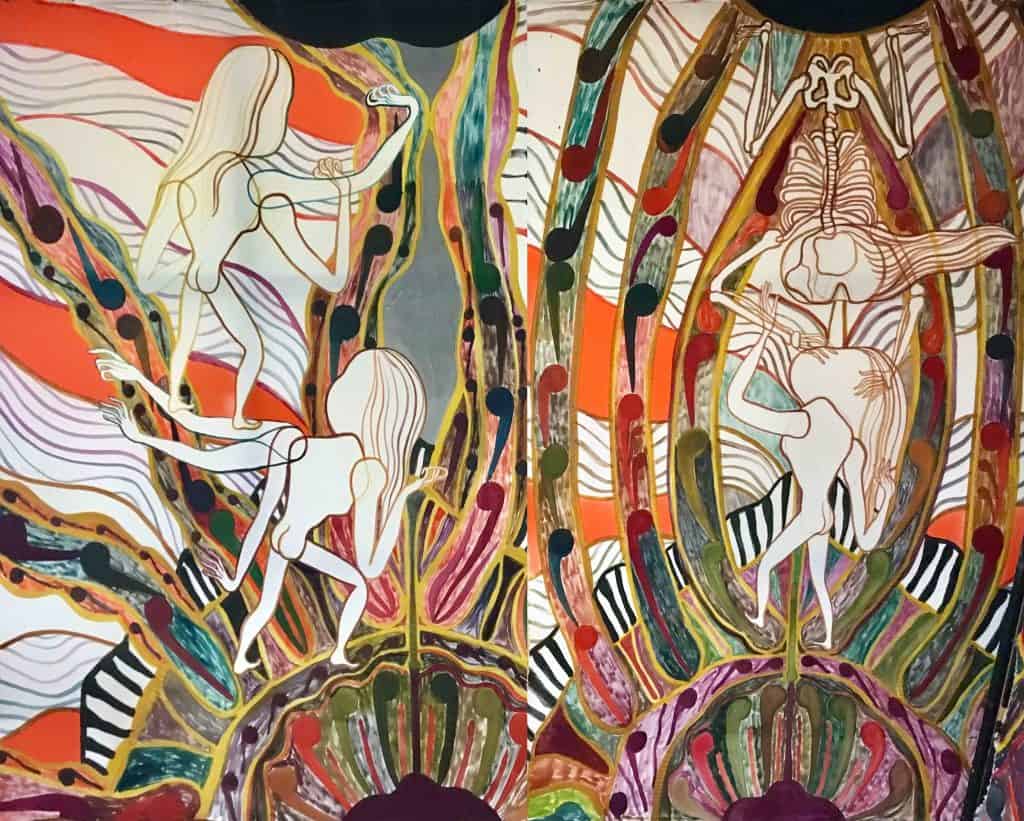
Emma Talbot How is your own death so inconceivable? 2019 Acrylic on silk Courtesy the artist
Ending in Rome, Talbot will be hosted for two months by the prestigious research academy, The British School at Rome, where she will have access to a studio and all institutional facilities. She will be supported in her research by the British School tutors. Focusing on Herculean myths, she will also spend time at Museo Nazionale Etrusco di Villa Giulia researching designs on Etruscan Pottery, which are powerful conveyors of classical mythology. Whilst in Rome, Emma will visit museums and archeological sites with the aim to acquire a deep knowledge of the classical Italian landscape.
Talbot’s winning proposal for the Max Mara Art Prize for Women questions deeply rooted positions of power, governance, attitudes to nature and representations of women, through an acutely personal lens. It takes as a starting point Gustav Klimt’s painting, Three Ages of Woman (1905), which features a naked elderly woman standing in apparent shame. The painting is housed at the Galleria Nazionale d’Arte Moderna in Rome and Talbot will have the opportunity to see it first-hand during her residency. In her work for the Prize, Talbot intends to animate the figure of the older woman as someone with agency who overcomes a series of trials similar to The Twelve Labors of Hercules. Through her modern-day trials, Talbot will invest the woman with the potential to reconstruct contemporary society, countering prevalent negative attitudes to ageing.Max Mara Art Prize For Women Emma Talbot (2019 -2022)Reggio Emilia: June – July 2021Catania: August – September 2021Rome: October – November 2021collezionemaramotti.org/it/max-mara-art-prizewhitechapelgallery.org/max-mara-art-prize-women/
The Max Mara Art Prize for Women, in collaboration with Whitechapel Gallery is a biannual award established in 2005. It is the only visual art prize for women in the UK and aims to promote and nurture female artists, enabling them to develop their potential with the gift of time and space. The prize is open to women artists living and working in the United Kingdom who have not previously had a major solo survey exhibition. The partners of the prize are Max Mara, Whitechapel Gallery and Collezione Maramotti who collaborate on each phase of the prize. Each year a jury, chaired by Whitechapel Gallery Director Iwona Blazwick, and including a gallerist, critic, artist and collector, agree on a shortlist of artists before the winner is decided based on the artists’ proposals. The winner is awarded a six-month Italian residency tailored to fit the artist and her winning proposal for the Prize. During the residency, which is organised by Collezione Maramotti, the artist has the opportunity to realise an ambitious new project which is presented in major solo exhibitions at the Whitechapel Gallery in London and at Collezione Maramotti in Reggio Emilia, Italy, which then acquires it. The Max Mara Art Prize for Women was awarded the British Council Arts & Business International Award in 2007 and has enabled winning artists to take major steps in their careers.
Previous winners of the Max Mara Art Prize for Women are:
Helen Cammock (2017 – 19) – Cammock (b. 1970) presented a film, a series of vinyl cut prints, a screen-printed frieze and an artist’s book interweaving women’s stories of loss and resilience with seventeenth-century Baroque music by female composers, exploring the concept of lament in women’s lives across histories and geographies in her exhibition Che si può fare. Since winning the Max Mara Art Prize for Women she was awarded the Turner Prize 2019 together with Lawrence Abu Hamdan, Oscar Murillo and Tai Shani.
Emma Hart (2015 – 17) – Hart’s (b. 1974) large-scale installation Mamma Mia! (2016) consists of a family of large ceramic heads, whose interior space is filled with vivid patterns, designed and hand-painted by Hart after researching the designs and practice of the Italian tradition of maiolica pottery. This project represents the culmination of an investigation into pattern, from visual patterns to patterns of psychological behaviour.
Corin Sworn (2013 – 15) – Sworn (b.1976) created a work drawing from the Commedia dell’Arte improvised plays originating in 16th century Italy, where they continue to be of great cultural importance. Her installation titled Silent Sticks consists in a dramatic stage set with props, costumes, sound and video elements. She was awarded the Leverhulme Prize 2015 which recognises the achievement of outstanding researchers whose work has already attracted international recognition and whose future carrier is exceptionally promising.
Laure Prouvost (2011 – 13) – Prouvost created an ambitious large-scale installation for her Max Mara Art Prize exhibition Farfromwords, inspired by the aesthetic and sensuous pleasures of Italy and plays on the historic idea of visiting the Mediterranean for inspiration. In 2013 she was awarded the Turner Prize. Her project Deep See Blue Surrounding You was presented in the French pavilion at the 2019 Venice Biennale.
Andrea Bu?ttner (2009 – 11) – Büttner’s The Poverty of Riches explored the intersection of religion, art and the condition of the artist in the contemporary world. Including woodcuts, cloths, photographs and objects she transformed the exhibition space into a space of contemplation. Part of her project was included in the Whitechapel Gallery’s landmark exhibition “Adventures of the Black Square” in 2015.
Hannah Rickards (2007 – 09) – The prize enabled Rickards to realise No, there was no red., an ambitious two-screen film she had been researching before winning the Prize. She was also awarded the Leverhulme Prize in 2015 and had a major exhibition at Modern Art Oxford in 2014.
Margaret Salmon (2005 – 07) – Salmon travelled to Italy and created a triptych of black and white films exploring themes of motherhood. She went on to exhibit at the Venice Biennale in 2007.


